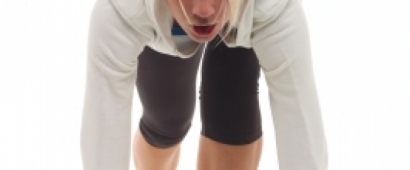Participation in organized sports has many benefits including: accountability, and determination. Improved self-esteem and body image for many is also common. The environment often fosters a sense of community, and increases communication and teambuilding skills. However, there are many factors of a team sport environment which can contribute to an increased risk for developing an eating disorder. A 2004 study[1] found that eating disorder symptoms are more prevalent in elite athletes than the general population (13.5% compared with 4.6%). Competitive team sports and pressure to perform increases the risk for eating disorders among athletes. This intense drive to achieve paired with a culture that glorifies thinness, puts female athletes in particular at an even greater risk. Though eating disorders are more common in female athletes, males are also susceptible. Sports which focusing on an athlete’s diet, appearance, size, and weight requirements, such as wrestling, bodybuilding, crew, and running are risk factors for both male and female athletes.

Other risk factors to keep in mind include sports that focus on the individual rather than a team. These include sports like figure skating, diving, gymnastics, and running versus team sports like baseball or soccer. Sports emphasizing appearance or a weight requirement also may contribute to disordered eating beliefs and behaviors including: wrestling, and body building. Low self-esteem, family discord, and pressure to be thin from others in and outside of the sport are just a few of the many warning signs to look out for. Social influences emphasizing a thin ideal, performance anxiety, and negative self-appraisal of athletic achievement are three top risk factors noted by the National Eating Disorder Association, [2] and are thought to predominantly contribute to a female athlete’s vulnerability to developing an eating disorder.
The Female Athlete Triad
When engaged in competitive sports ignoring the needs of our bodies in the service of our sport can have severe consequences. The female athlete triad [3] is a dangerous combination of three conditions including: amenorrhea (loss of one’s menstrual cycle), chronic insufficient fueling one’s body to meet the intense needs of athletic training, and osteoporosis (weakening of the bones due to loss of bone density). The consequences of just one of these factors can be severe ranging from increased irritability and anxiety to stress fractures and “overuse injuries” which interfere with success in your sport as well as your life.
The above mentioned symptoms can be treated by medical professionals. To avoid long standing health issues seek medical attention quickly, even if only one component of the triad is present. Warning signs or symptoms to look out for include: the presence of a stress fracture, shin splints that do not heal, or decreased interest in your sport due to a preoccupation with food and weight.
How to prevent the triad:
- Keep track of your periods by writing the number of days between cycles, discussing them with your physician if there is significant fluctuation.
- Eat every three to four hours. Plan ahead to adequately fuel your workouts and help you recover afterwards.
- Account for the amount of exercise you get in a day. More food/fuel is needed with increased exercise.
Protective Factors
In addition to warning signs and risk factors, protective factors for athletes are equally important. Having friends, family, and coaches who support and influence healthy attitudes towards shape and size can be very beneficial. Emphasizing factors that contribute to personal success such as motivation and enthusiasm can be much more beneficial than body weight or shape to promote healthy body image and self-esteem. Finally, having access to coaches or trainers who educate and discuss the negative effects of chronic malnutrition on performance reduce the risk of developing an eating disorder or eating disorder symptoms.
Treatment of Athletes With Eating Disorders
When treating competitive athletes with eating disorders it is important to take into account the length and time the eating disorder has been present, one’s physical health at the start of treatment, and what their exercise level will look like after treatment. Collaboration with a medical professional is essential to address the long terms effects of amenorrhea and osteoporosis. Overarching goals include: learning appropriate types of training and implementing healthy and individualized meal plans with a registered dietitian. In therapy continual focus on the function or motivation for excessive exercise and calorie restriction/monitoring is essential. Learning skills to increase psychological flexibility and gaining the tools to challenge long held beliefs and internal rules created around how much to exercise or consume at a time are imperative.
In summary, participation in sports and general exercise has many psychological and physiological benefits including increased energy and self-esteem. Unfortunately, it can also increase one’s risk to develop an eating disorder, particularly when emphasis is placed on an individual’s performance versus that of a team. Healthy social support, medical consultation, and education are preventive/protective factors to counteract much of the negative messaging consumed through the media. Regular consultation is recommended with medical professionals and registered dieticians concerning irregular menstrual cycles, excessive/lingering injuries, and questions surrounding proper nutrition. This is true especially when engaging in competitive sports and activities.
Inner Door Center is a JCAHO accredited eating disorder treatment center that offers multiple levels of care to fit your specific needs. If you, a loved one, or someone you know are suffering from an eating disorder, or any other mental health concern, please contact Inner Door Center at (248) 336-2868.
- Sundgot-Borgen, J., & Torstveit, M. K. (2004). Prevalence of eating disorders in elite athletes is higher than in the general population. Clinical Journal of Sports Medicine, 14(1), 25-32.
- https://www.nationaleatingdisorders.org/athletes-and-eating-disorders
- http://www.olympic.org/hbi
Please call Inner Door Center for any inquiries you may have at (248) 336-2868 or check out our website at www.innerdoorcenter.com.